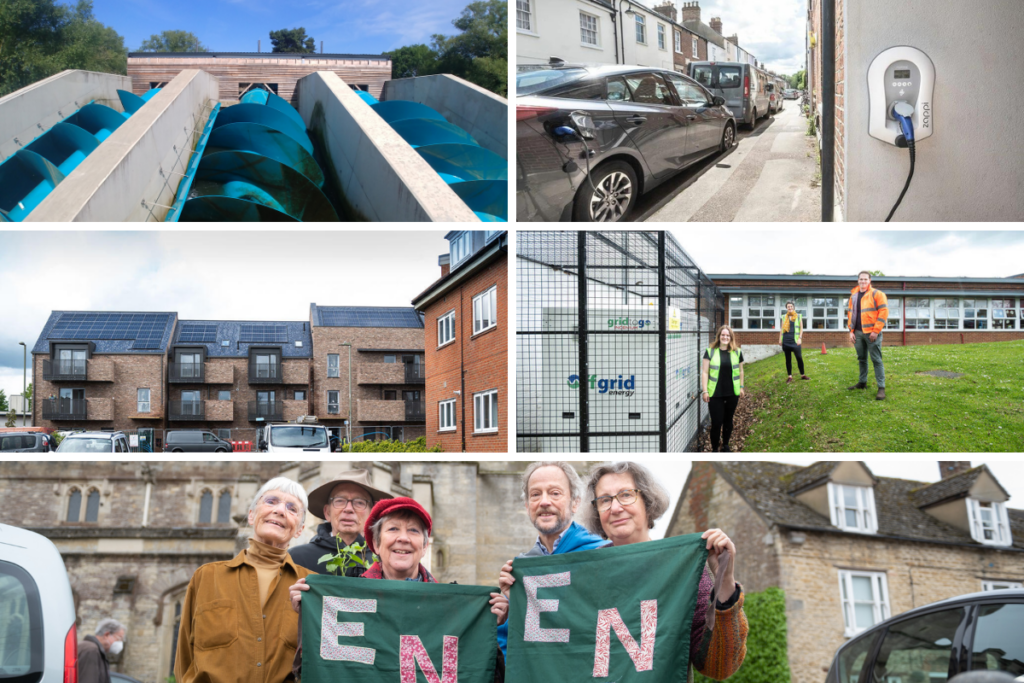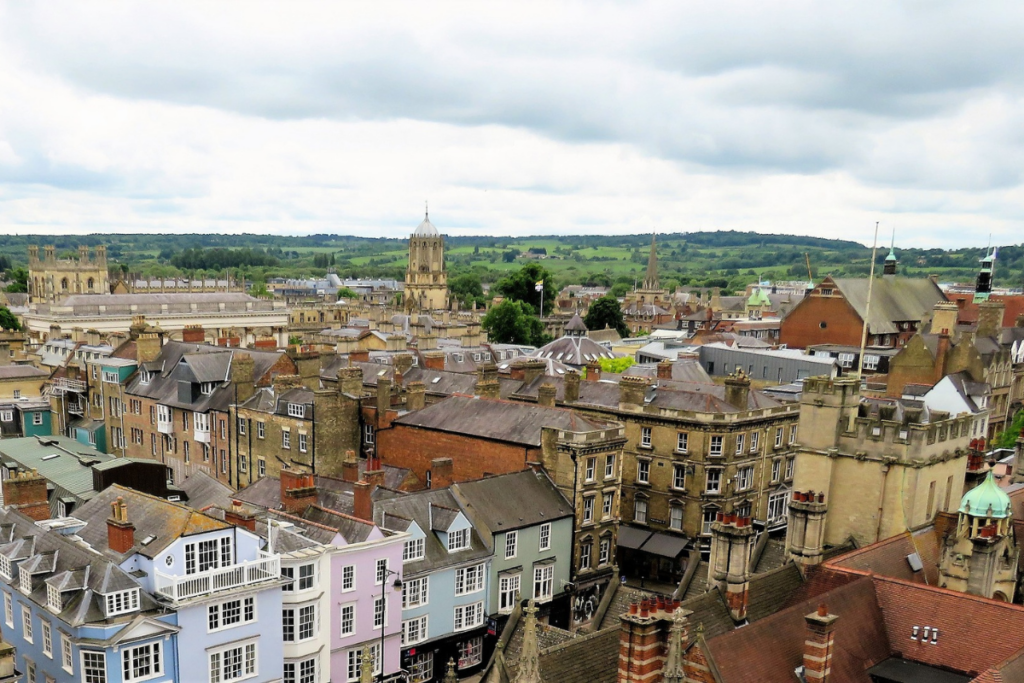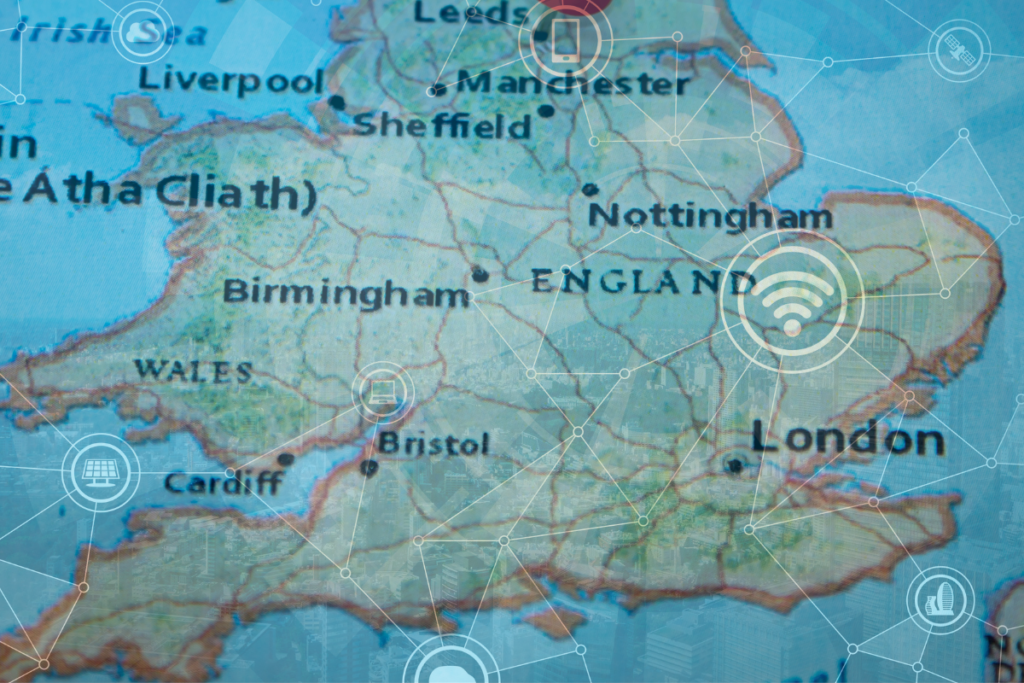Exploring the Key Messages from our Smart and Fair Neighbourhood trials Report
As the ambitious and pioneering Project LEO drew to a close earlier this year, we have produced a report that looked at the Smart Fair Neighbourhood trials that took place over the term of Project LEO that outlined what was tested and achieved through each of the six local trials. The D3.10 Report is a comprehensive outline of the trials, who was involved, what we aimed to achieve and our key learnings from them.
What were the Smart Fair Neighbourhood trials?
During Project LEO, Low Carbon Hub ran a series of ‘hyperlocal’ trials in Oxfordshire to look at ways communities and households can play a part in generating, using and trading energy to help create flexibility for the grid, providing insights for our future energy systems.
The Smart Fair Neighbourhood trials explored a number of scenarios using cutting-edge research into how our energy system can transition to operate in a way that:
- is zero carbon
- puts people and communities at its core
- is smart and fair and designed to meet everybody’s needs, leaving no one behind.
You can read an overview of each of the trials here.

Examining the key messages
When developing the D3.10 report, we derived five key overarching messages that came from conducting our Smart and Fair Neighbourhood trials and these are outlined in the report. In this article, we will look at ached of the messages, in turn, to explore what they mean for the future of smart and fair local energy systems.
1: We need buy-in from every customer and every community
The overall aim of the complex and often technical LEO trials was to establish the possibility of a transition to a clean and smart energy system for the future and identify the potential barriers to overcome. The good news is that we concluded that the transition to a renewable electricity system is entirely possible.
Through the Smart and Fair Neighbourhood trials, we were testing how introducing flexibility at the grid edge (where we use the electricity supplied by the networks) can help us move away from a top-down energy supply, where the power is held by a handful of big energy suppliers and create a new model where people, households, and communities play a more active role.
However, one of the key things we learned was this transformation of activity by users, particularly in the shift to electrifying our heating and transport systems. Everyone within our communities must play a part in this transformation and we learned that they can derive all kinds of value from doing so.
But the current problem is the general lack of understanding of the need for change, and beyond that, what new products and services need to be implemented by everyone, everywhere to bring the change about.
Through our local trials, we discovered that we can successfully develop a shared understanding of the need for a clean energy transition in our communities. And that households and businesses are willing to change and optimise how they use their energy to support this transition. We also found that there is a strong appetite for the coordination of the use, generation, and storage of energy within the community.
The trials also support research findings on the importance of how fair projects are seen to be in their success. More people are likely to buy into changes if the projects are ethical and fair in their design and delivery.
These findings are incredibly positive and we know now there is a bigger job to be done to educate and inform individuals and communities of the potential for smart local energy systems, using the learnings from our trials as examples to ensure future success.
2: Every building must be ‘FutureFit’
A natural progression from the message above, once people and organisations are educated and understand the need for change, the next key requirement is optimising our homes and buildings so that grid edge transformation can take place easily.
We’re all familiar with the concept of retrofitting our homes to make them more energy efficient. Key to the successful rollout of Smart Local Energy Systems is taking this to the next level and ‘FutureFitting’ them, making them not only energy efficient but essentially turning them into microbusinesses that generate, store and share their own clean energy. Every building can then start balancing demand and generation as far as possible while using and exporting energy in a way that generates extra income.

To achieve this, we’ve identified a need to develop products and services that can work together to provide a simple and easy customer journey, empowering more people to make those changes and reap the benefits.
Finding the funding for retrofitting buildings has posed a barrier because customers do not easily see the value of this expenditure. However, results from our trials demonstrate that owner-occupier households are increasingly aware of the benefits to them of becoming FutureFit, both in terms of their energy security as well as reducing their energy bills.
The more accessible and affordable that we can make the services and products required for all buildings to become FutureFit, the swifter and more widespread the uptake will be.
3: Every community needs a Smart Community Energy Scheme
The next progression in creating a successful clean energy transition is to ensure every community has a Smart Community Energy Scheme that everyone has access to.
In this way, FutureFit buildings can work together with community-scale energy generation and storage assets to deliver flexibility services (increasing or reducing the community’s use or supply of energy to or from the grid) and can trade electricity with one another or the grid to create an additional revenue stream for participants.
Our experience shows that it is highly unlikely that every owner of a FutureFit building or renewable energy asset will actively engage with their local flexibility services or market themselves, and so the full range of benefits for both owners and the network cannot be realised unless a scheme is in place that lets them work together.
This is because energy flexibility services require coordination across multiple assets, and the complexity of the process often makes it difficult for individual asset owners to manage. By working together, the network and asset owners can leverage economies of scale and the aggregation of assets to reduce the costs and effort associated with energy flexibility services.
When a Smart Community Energy Scheme is in place, all households and businesses within the community can benefit by taking part in energy flexibility services without the associated work or expense.
In the 2023 ‘Mission Zero’ report, Chris Skidmore MP echoes this message, saying: ‘Consumers will play an active role, taking up new tariffs and adopting smart appliances that reward flexibility and balance supply and demand variability in a hands-off way.’
4: Optimisation behind the secondary substation brings a wide range of benefits but investment in data and digital by Distribution Network Operators is key to realising these
Through the Smart Fair Neighbourhood trials, we have begun to demonstrate the benefits of reducing electricity demand and balancing generation and demand behind the secondary substation. This is the point where low-voltage electricity is supplied to customers from the grid (also known as the grid edge). These benefits include lower electricity bills, reduced greenhouse gas emissions, and increased reliability of the electricity supply. This flexibility also helps to reduce the strain on the electrical grid during peak load times.
We’ve found that investment is needed in the data and digital systems of our electricity networks, especially at the grid edge, to ensure the data produced is understandable for both Distribution Network Operators and customers alike.

This reliable and easily understood data will demonstrate how the flexibility services provided by communities are working and the scale of benefits that they provide. That in turn will mean that successful Smart Community Energy Scheme models can be developed, repeated and then replicated everywhere in any network area around the UK, bringing us a big step closer to reaching our next zero commitments.
5: A ‘Local Convenor’ is needed to catalyse action and unlock the value at the grid edge
With the rollout of any new scheme that involves numerous players and stakeholders, a central convenor can add huge value to the process by enabling collaborative efforts to run smoothly. With the potential complexity of setting up a Smart Community Energy Scheme, we identified the need for a person, persons or body to act in a catalysing or convening role.
By creating a role or roles for a convenor for the Schemes, we can ensure that a central expert is in place to oversee their development as well as identify new opportunities for their development. The convenor can then successfully bring individual energy customers and communities together with their energy network operator (DNO) and local authority to share knowledge and learning at the grid edge in order to successfully deliver the projects.
In the Smart Fair Neighbourhood Trials, Low Carbon Hub acted in this convenor role, and we see the role as vital to fill a gap in the emerging local energy institutional architecture, although we recognise that more work is needed to define and test different options for defining and recruiting convenors. For example, we’re unsure if the convenor can or should be a single actor, or whether it is actually a body consisting of a number of actors collaborating, learning and sharing knowledge freely. We are, however, more certain that the role needs to be able to be entrepreneurial in identifying opportunities that can be delivered either as services to individual customers at scale or as commercially viable and repeatable Smart Community Energy Scheme.
We are excited to share these key messages which we believe will be central to the successful development of future Smart Community Energy Schemes. They are the output of many months of work and learning from our Smart and Fair Neighbourhood trials and take us one step closer to creating a clean and inclusive energy system for the future.
